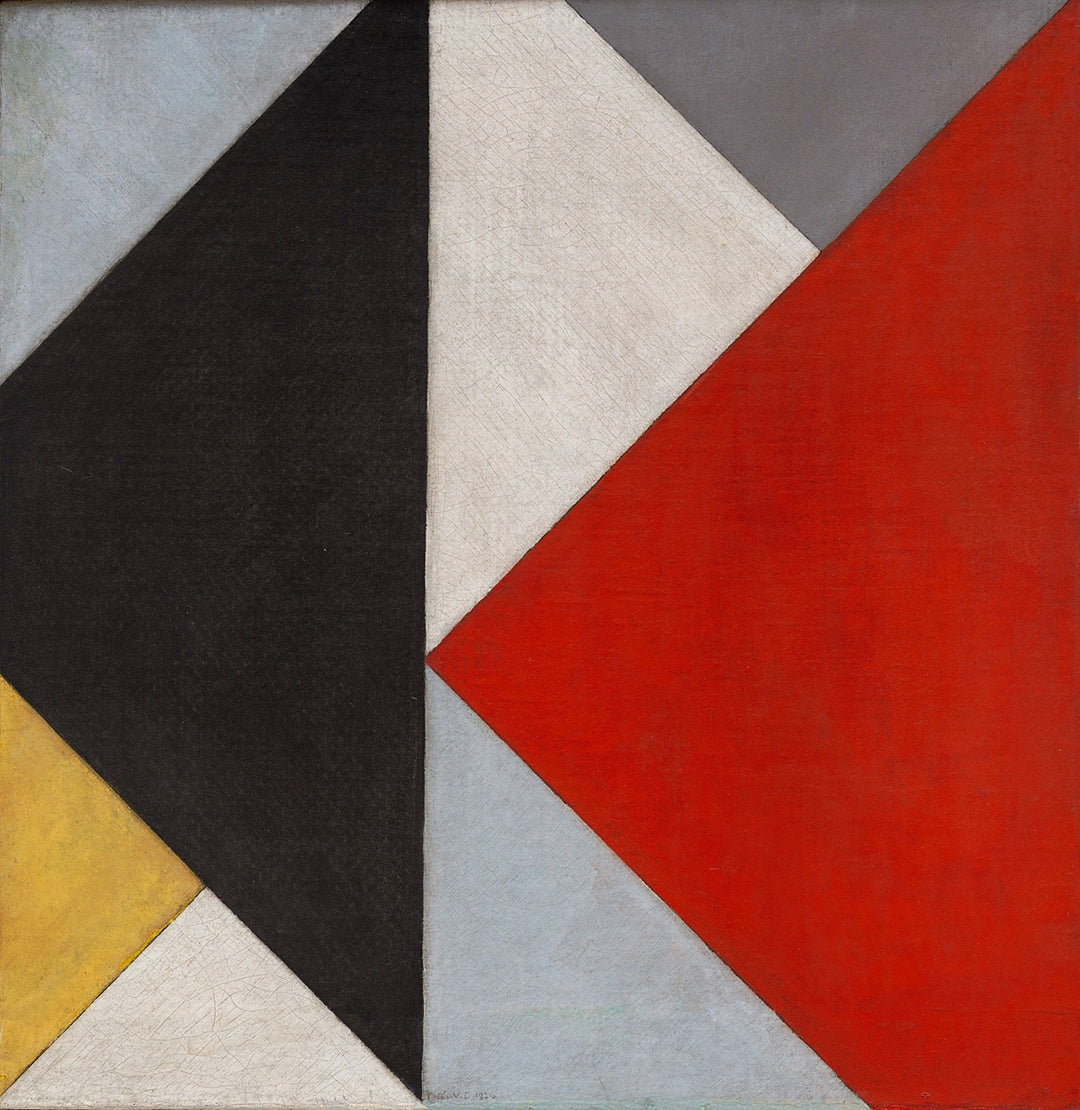
Counter-Composition XIII - Theo van Doesburg
| Author: | Van Doesburg |
|---|---|
| Title: | Counter-Composition XIII |
| Original location: | Solomon R. Guggenheim Museum, New York, USA |
| Year: | 1925 |
The year 1925 marked a turning point in abstract art with the creation of Theo van Doesburg's Counter-Composition XIII, a work that challenged the rigid principles of Neoplasticism by incorporating diagonal lines. This geometric piece is made up of triangular and rectangular shapes in shades of black, red, white, gray, yellow, and light blue. The contrast between the dominant black and the vibrant red reinforces the sense of dynamism, while the white and gray areas provide balance. The asymmetric arrangement of the figures seems to defy the traditional stability of Neoplasticism.
In his studio in Meudon-Val-Fleury, near Paris, Van Doesburg reconfigured the visual syntax of De Stijl, establishing a dynamic system aimed at reflecting the energy of the modern world. Unlike the strict compositions of Mondrian, which emphasized aesthetic harmony through orthogonal axes, Van Doesburg introduced a new principle: Elementarism, where the diagonal was not a whim but a structural necessity to capture the sensation of movement and change.
This aesthetic difference caused a rift between the two artists. Mondrian, obsessed with the purity of forms in a deep, almost religious quest for the essence of the visible, saw diagonals as a betrayal of the substance of Neoplasticism, while Van Doesburg argued that art needed to evolve alongside the speed and mechanics of the industrial age.
The inclusion of diagonal lines had not only artistic implications, but also philosophical and scientific ones. While Einstein was redefining physics with relativity and the Futurists were glorifying speed, Van Doesburg understood that art needed to abandon Cartesian rigidity to embrace a new perception of space-time. This transformation resonated with later generations, influencing Soviet Constructivism, Concrete Art, and, later on, the aesthetics of contemporary graphic design.